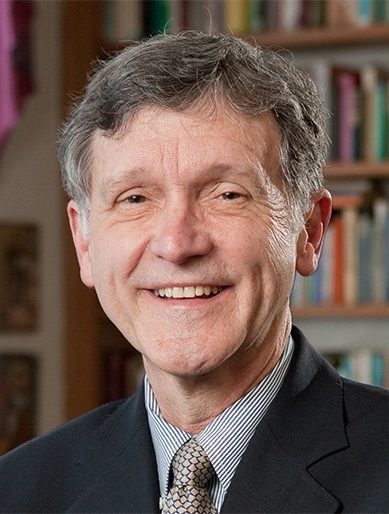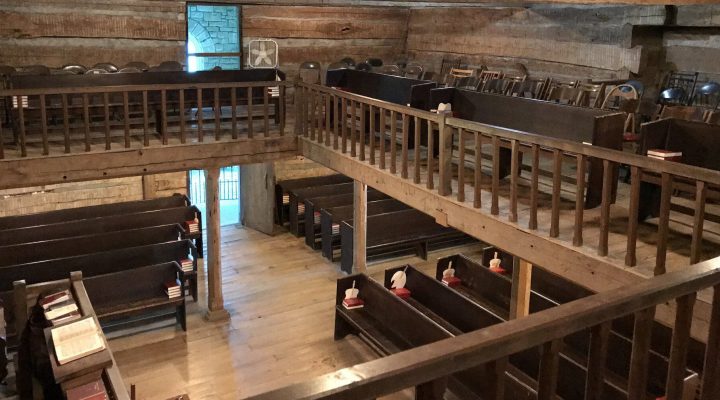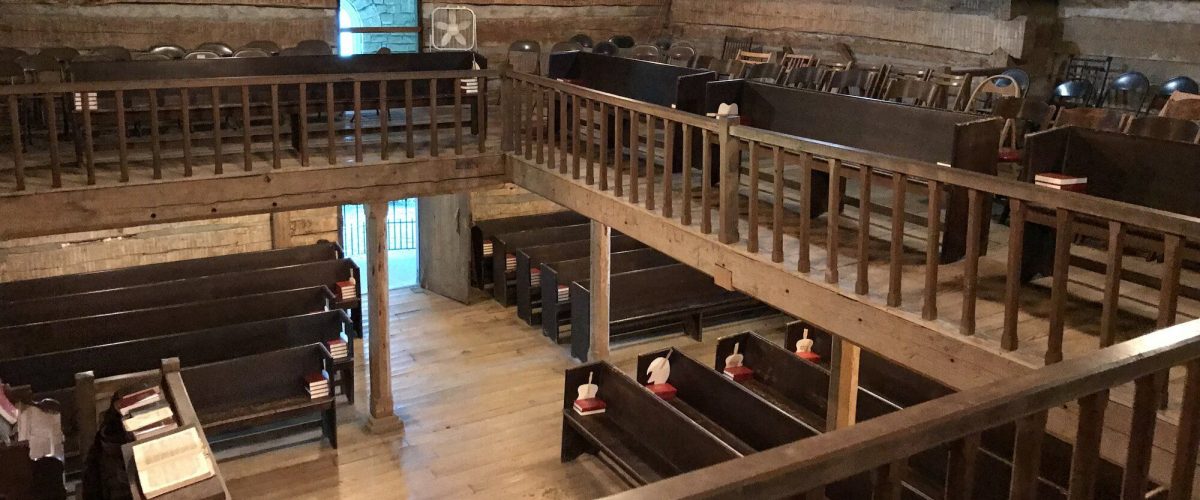In the introduction to his classic work, A Faithful Narrative of the Surprising Work of God, published in 1738, Jonathan Edwards, pastor of the Congregational Church in Northampton, Mass., described the behavior of the town youth prior to the awakening of 1733:
Licentiousness for some years prevailed among the youth of the town; there were many of them very much addicted to night-walking, and frequenting the tavern, and lewd practices, wherein some, by their example, exceedingly corrupted others. It was their manner very frequently to get together, in conventions of both sexes for mirth and jollity, which they called frolics; and they would often spend the greater part of the night in them, without regard to any order in the families they belonged to: and indeed family government did too much fail in the town.

Bill Leonard
I recalled that passage from Edwards when I heard details of the “Asbury revival” on the campus of Asbury University in Wilmore, Ky. Unlike 18th century Northampton, 21st century Wilmore seems a natural place for an awakening. Years ago, my friend and Asbury history professor, the late Melvin Dieter, told me the odds for an awakening among his students were pretty good, since Wilmore is at least 30 miles from the nearest sin. (He meant Lexington, where Kentucky bourbon and horseracing go hand in hoof.)
The revival began on Feb. 8 when some students “tarried” after a required chapel service to pray and sing; others joined them and an “awakening” happened. One participant told the New York Times they simply sought “to experience the presence” of God together. Soon thousands of folks besieged chapel and town, a throng that exhausted local resources so extensively that the Asbury president ended the gatherings for outsiders by Feb. 24. Some label it the 21st century’s “first major revival experience.”
I first taught the history of American revivalism in 1976, in a basement classroom at the Southern Baptist Theological Seminary in Louisville, Ky. It included a pilgrimage to Cane Ridge Shrine, as Disciples of Christ folks call it, site of the 1801 awakening attended by thousands. Almost 50 years later, I am delighted that the “Asbury awakening,” one of many throughout the school’s history, has renewed interest in the nature and history of revivals within American Protestantism.
“I started asking undergraduates and graduate seminarians in my classes how many had ever attended a revival. The lifted hands diminished with each new class.”
I also celebrate Baptist News Global’s publication of numerous essays reflecting on the Asbury phenomenon. BNG articles offer something of a primer on revivals for a generation that knows little about them. Early on in the 21st century, I started asking undergraduates and graduate seminarians in my classes how many had ever attended a revival. The lifted hands diminished with each new class.
That’s not surprising, since the decline of church-related revival services occurred across several decades. Time was when they were often two-week affairs, even longer if the Spirit took hold. When revivalist and converted baseball player Billy Sunday showed up, they could become “protracted meetings,” with stores closing for evening services. A few nights after Sunday had waged rhetorical war on “demon rum,” even the bars shut down.
In time, two-week revivals gave way to one-week services, the first stage of cultural accommodation, some hard-core preachers warned. Decades later, one-week awakenings became three-day events, Sunday to Wednesday. By the 1990s even that was difficult. Around 1993 or so, in an American religion course at Samford University, a student brought an ad from the Birmingham paper touting a “One-Day Revival” at a local megachurch. I asked, “What do you think Billy Sunday would say to that?” He’d say: “Just let them all go to hell. You can’t save nobody in a one-day revival!”
“Reading the revival-related insights of my BNG colleagues helped me reflect on the impact of awakenings then and now.”
Reading the revival-related insights of my BNG colleagues helped me reflect on the impact of awakenings then and now. Thus, the following:
Joseph Early surveyed revivalistic history, reminding us that 19th century revivalist Charles Grandison Finney “allowed women to speak or preach and most famously invented the ‘anxious bench.’ Finney reserved the first bench for those who were ‘anxious’ about their spiritual condition. Those who were led to pray for these souls would come forward and pray with them. The anxious bench was a clear precursor to ‘coming forward’ that is prominent in many evangelical denominations today.”
Many Presbyterians revolted against women teaching men and feared that coming forward was a form of “works-righteousness,” giving sinners false hope.
Finney also opposed slavery, influencing a younger generation of preachers who called for conversion and abolition. Some studied at Lane Theological Seminary in Cincinnati, where they joined Black men and women in rejecting the South’s “Peculiar Institution.” Lane trustees, fearing controversy, demanded students preach Christ but shut up about slavery.
In response, a majority of students went to Oberlin, Ohio, founding Oberlin College, the first institution in the country to allow Blacks and females to study for degrees. They sent word to Finney, “You got us into this, now join us,” which he did, becoming professor of theology and later president. The first women ordained to ministry in the U.S. were Oberlin graduates. (Repent, Southern Baptists!)
Rick Pidcock celebrated the spirit of the times, evident among Asbury students, then asked: “How can school officials claim the events have happened spontaneously and surprisingly when they have spent years celebrating past revivals and teaching students exactly how they happened, and then participated in a promotional video the week prior calling people to come to their campus for a revival-inspired day of prayer?”
His question illustrates the fact that while Jonathan Edwards insisted that revivals were “a surprising work of God,” Charles G. Finney was much more pragmatic, asserting that a revival is “the right use of the duly constituted (biblical) means.” Even at Asbury, seeds were sown toward making the awakening happen.
Andrew Garnett urged us to look beyond “technical challenges … that can be tackled if the right skills are available” in which “solutions are often apparent, and people are typically receptive to technical solutions.” He advocated consideration of “adaptive challenges” that are “multifaceted,” “cross-disciplinary,” and “more complex to solve.”
Garnett explained that adaptive challenges “can be overcome only by transforming our mindset. To overcome an adaptive challenge, we must learn to think differently about reality itself.” He concluded by articulating such challenges in light of the Asbury revival:
When seminary attendance is declining, and those who do enroll in a seminary are less interested in leading worship in a congregational setting, why are so many nameless young adults interested in leading worship here? If social media has encouraged us to show only the best parts of ourselves, what about the Asbury revival has caused the surge in confession and personal testimony?
“What if they could ‘experience the Presence’ without having to choose confessional sides?”
Garnett prompted me toward another question: What if the atmosphere created by spontaneous, personalized but communal worship was meaningful to students because, for one brief, shining moment they didn’t have to sign an old/new doctrinal statement, or declare themselves culture war combatants? What if they could “experience the Presence” without having to choose confessional sides?
Laura Levens described a similar break from confessionalism, noting: “People prayed for the sick, for the salvation of Kentucky and other regions of the world, against spiritual warfare. They prayed over trauma, body issues, broken relationships, inclusion of marginalized students. There are hints of struggle with purity culture and body image on the boards.”
She acknowledged that sexuality issues appeared, as when a white board prayer for LGBTQ persons was aggressively erased, only to be replicated soon after. Levens referenced the 19th century non-binary Quaker preacher Jemima Wilkinson who, upon conversion, declared themselves “the Publick Universal Friend,” embodying God’s welcome for and beyond male and female, an often-overlooked revival-inspired figure. Levens concluded insightfully: “Revival can coexist with protest and collective social action, but it cannot replace them as the sole path for change.”
Levens’ comment parallels Mark Wingfield’s caution: “A movement of the Spirit that compels the faithful to act justly, love mercy and walk humbly with God sounds fantastic. But a movement of the Spirit that wraps worshipers in a kumbaya moment that produces no fruit sounds like faith without works.”
Their declarations took me back to the revival testimony of a Kentucky slave woman named Winney, referenced in the minutes of the Forks of Elkhorn Baptist Church, Midway, Ky., where she held membership:
The 2nd Saturday in January 1807 after divine Worship proceeded to business. Complaint brought against Sister Esther Boulwares Winney 1st for saying she once thought it her duty to serve her Master & Mistress but since the lord had converted her, she had never believed that any Christian kept Negroes or slaves — 2nd For saying she believed there was Thousands of white people Wallowing in Hell for their treatment to Negroes — and she did not care if there was as many more — Refer’d to next Meeting.”
At the February 1807 church meeting the “complaint … was taken up. She is excluded for the same.”
Conversion to Christ helped that slave woman talk free, even in bondage. When she did, her church threw her out. Today in half the states in the USA we probably wouldn’t be allowed to tell her story. Too “woke” and “CRT’ for our children.
Lord, send a revival.
Bill Leonard is founding dean and the James and Marilyn Dunn professor of Baptist studies and church history emeritus at Wake Forest University School of Divinity in Winston-Salem, N.C. He is the author or editor of 25 books. A native Texan, he lives in Winston-Salem with his wife, Candyce, and their daughter, Stephanie.
Related articles:
We’re asking the wrong questions about the Asbury revival | Opinion by Andrew Garnett
About the Asbury ‘revival’: Time will tell | Opinion by Mark Wingfield
What I witnessed this week at the Asbury revival | Analysis by Laura Levens
Questions to ask while pondering if Asbury is hosting a ‘true revival’ | Opinion by Rick Pidcock
‘Something wonderful and of God is happening at Asbury,’ church historian believes | Analysis by Joseph Early


